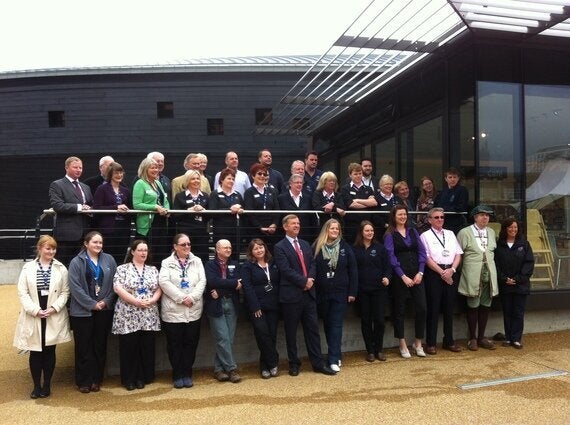Working at the Mary Rose, it seems hard to believe people who say that there aren't enough women in science. We have a healthy number of female scientists here at the museum specialising in all sorts of fields. Conservation, archaeology and teaching are the most popular however; physics still seems to be a subject left to the boys.
Alexandra Hildred, one of the archaeologists who dived on the Mary Rose before it was lifted in 1982, is currently curator of ordnance and is working on understanding and identifying the many unique and unusual weapons that were recovered on the sea bed, such as our hailshot pieces, handheld antipersonnel weapons only found on the Mary Rose.
Our conservation manager, Dr Eleanor Schofield has dedicated her time to analysing the timbers at the Diamond Light Source in Oxfordshire, using X-ray absorption spectroscopy to examine the sulphur content during the drying process. She's also deduced that using SrCO3 nanoparticles could be used to stabilise the sulphur within the timbers.
Sue Bickerton has been on the team since 1980, working to preserve and restore the thousands of objects on display in the Mary Rose Museum. I personally recall visiting the conservation labs one day to find her reconstructing a powder ladle (used to push bags of gunpowder into a large muzzle-loading gun during loading) that had been nothing more than flakes of corroded metal in a bag. This ladle is currently on display in the museum, looking as if it had been brought up in one piece.
When it comes to encouraging the new generation of female scientists, our Science Officer, Amy Seadon, organises science days to persuade teenage girls to take up science-related subjects, teaching them about engineering and anthropology with the assistance of other female scientists from Bouygues UK and the University of Southampton. Hopefully one of those young women will return to the Mary Rose in the future as one of our conservation team!
When the Mary Rose was discovered, the team of divers, led by Alexander McKee, had limited experience of maritime archaeology, so in 1967 Margaret Rule was brought in as a non-diving archaeologist, giving up her time on alternative weekends while working on excavations at Fishbourne Roman Villa. She learned to dive with the Southampton branch of the British Sub-Aqua Club, finally finishing her training around the same time the first timers were located on the sea bed.
When the Mary Rose Trust was formed in 1979, Margaret Rule was appointed as archaeological director, in charge of the excavation and salvage of the Mary Rose. It was her who appeared in hundreds of newspaper articles, as well as on news reports for the BBC and ITV, and in a period when the British Monarch and Prime Minister were both female, this was an excellent time for another woman to be seen taking control of a complex operation such as the raising of the Mary Rose, in front of a global audience.
I only hope women in science spread, as after our recent win in the conservation category at the Museum and Heritage awards, the Mary Rose Museum has certainly thrived with their involvement.

The Mary Rose Museum team
